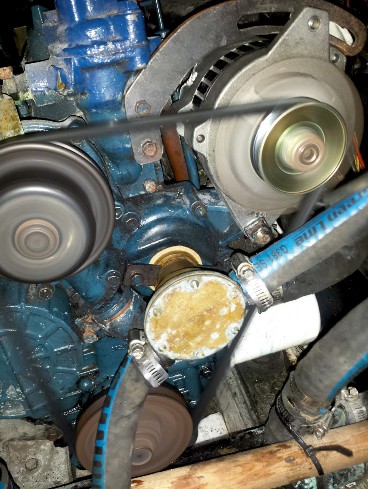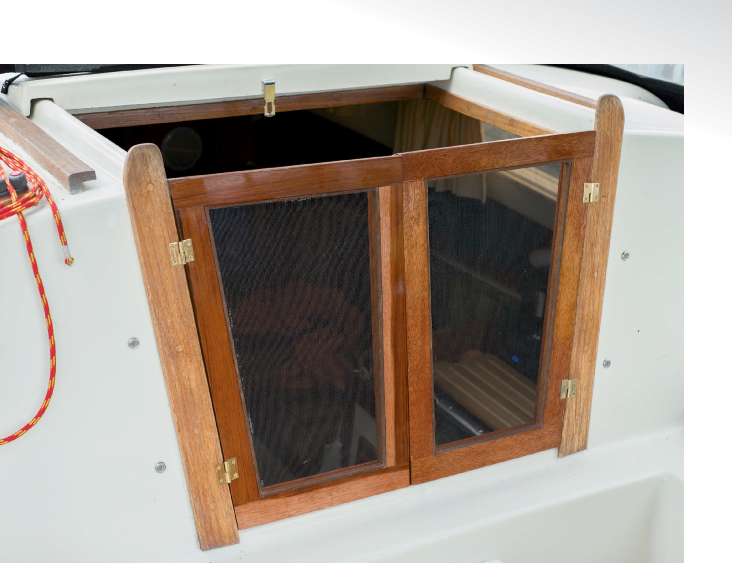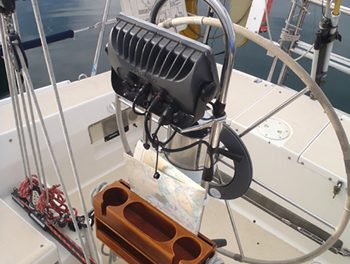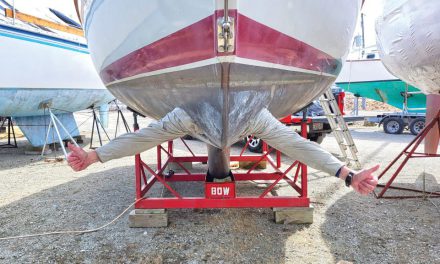A simple DIY pump system can keep your bilge dry
Issue 154: Jan/Feb 2024
“Ask me about my E.L.D.,” my friend says.
What, you are probably wondering, is an E.L.D.? Admittedly, it’s just an acronym I came up with to extoll the performance of my additional bilge pump. While Every Last Drop might be a stretch, it is, in practice, pretty close to the truth.
At issue is my long-standing desire, like most boat owners, to have a dry bilge. Bilge pumps do a great job of pumping water from the inside of the boat to the outside, where it belongs. However, even the best bilge pumps don’t quite get it all. In the boats I’ve owned, there are almost always several inches or so of water left that the bilge pump can’t access due to its design. That’s where the E.L.D. comes in.
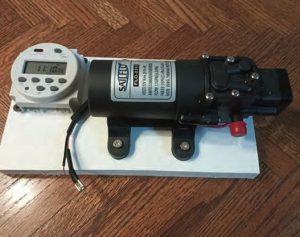
The E.L.D. pump and timer are mounted to a piece of StarBoard.
Ideally, the system should be self-priming, able to run dry for extended periods of time, be completely automatic, have minimal battery draw, and be flexible enough to cope with differing amounts of water. Luckily, my E.L.D. does all these things quite well.
The benefits are more than just the peace of mind in knowing that you don’t have water in your boat. The E.L.D. also means less humidity, fewer odors generated by stagnant bilge water, and an improved ability to discover any potential leaks.
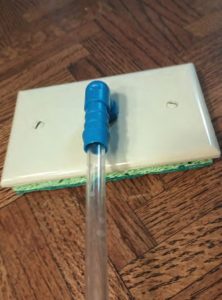
The sponge pickup is the heart of the system.
The E.L.D. is made up of three main components — the pump itself, the timer, and the pickup sponge, of which the latter is arguably the most critical to proper function. Additionally, you need some length of the proper diameter hose to connect the pickup sponge to the pump and the pump to overboard connections. Beyond that, you only need some fairly common wiring to connect the timer to the pump and the 12-volt battery source.
The operation is quite straightforward. The sponge is designed to attract and suck up every last drop of liquid from the bilge. The pump, which can run dry if no water is present, pumps the water from the sponge overboard. The timer controls when and for how long the pump runs. Simple.
You can program the pump to run for a minute once a week, every day all day, or anything in between. I have mine set to run three times daily — one minute each at 7 a.m., 1 p.m., and 7 p.m. There are three modes on the timer: on, auto, and off. It is easy to modify the times and duration for when the pump will run, depending on circumstances.
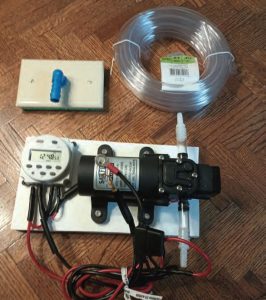
The system’s components are inexpensive and readily available.
You could be out cruising and running an onboard air-conditioning system that drains water from the evaporator directly into the bilge. Or perhaps your boat has a built-in cooler that drains as the ice melts. Either way, it’s simple to adjust the duration from one minute three times daily to three minutes three times per day, for example, to let the pump have enough time to pump out the excess water.
The pump and timer I used are both inexpensive and readily available. The heart of the system, the sponge pickup, can be assembled with just a few parts: a “scrubby” rectangular sponge, a blank switch cover plate, an appropriately sized pickup connector, and some screws to attach the sponge to the plate. Some other considerations are the size of the hose and some added weights to keep the sponge in place. A smaller-diameter hose will have better suction, so I reduced the tube size with connectors from the pump to the sponge. Weights can be added to the top of the sponge on the plate to help it stay put and provide better suction.
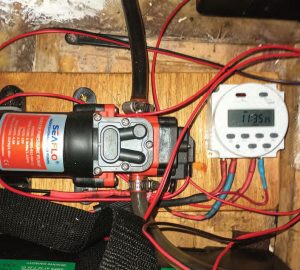
The E.L.D. pump and timer are located near the boat’s battery.
While the pump and timer can be mounted anywhere (in close proximity), I have mounted them on a small board for the sake of convenience. Wiring from the battery to the timer and pump is pretty straightforward.
Overall, I’m very happy with my E.L.D. My bilge is always dry and sometimes even dusty. The E.L.D. has been installed on several of my fellow captains’ sailboats, and by all accounts they are pleased. At the last time of purchase, the total cost for materials was about $100.
Steve Bufe, the great-grandson of a local lighthouse keeper, learned to sail on the southern shore of Lake Superior in Michigan’s Upper Peninsula. He currently sails his 1985 Pearson 303 from the Middle River on the Chesapeake Bay.
Thank you to Sailrite Enterprises, Inc., for providing free access to back issues of Good Old Boat through intellectual property rights. Sailrite.com


